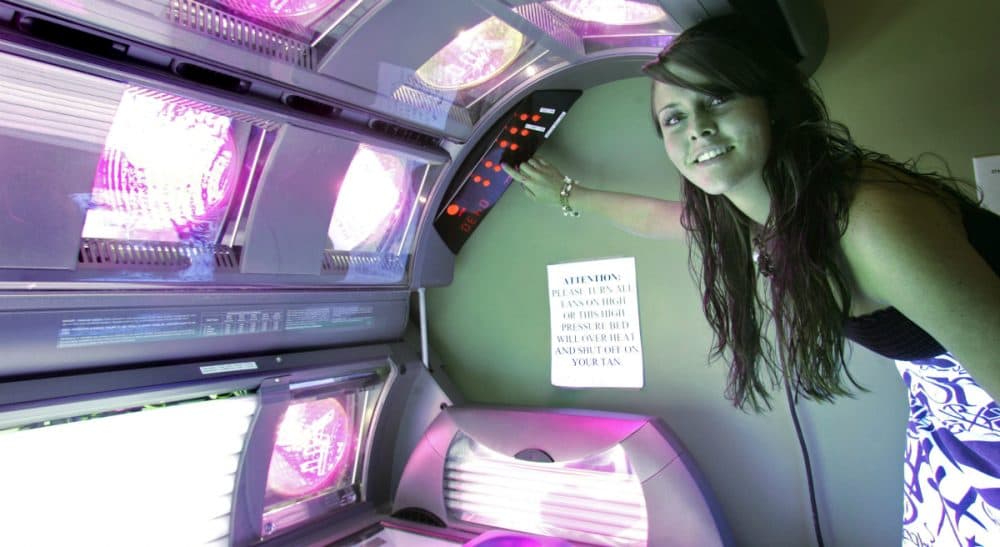Advertisement
No Such Thing As A ‘Healthy Glow’: The Case Against Letting Kids Use Tanning Beds

Last week, I diagnosed two patients with melanoma.
The week before that, I had to break the news to three patients. And a week before that, to one. I’ve been practicing dermatology for more than 25 years. When I first started, I diagnosed perhaps two or three people a month with melanoma. Now, I make that diagnosis once or twice a week.
I often hear, 'I don’t even go into the sun anymore.' Unfortunately, that doesn’t matter. The damage has already been done.
I often hear, “I don’t even go into the sun anymore.” Unfortunately, that doesn’t matter. The damage has already been done. Those years of sunbathing without sunscreen have already taken their toll.
Malignant melanoma is the most deadly form of skin cancer. This year alone, it is expected that 74,000 people will be diagnosed with melanoma in the United States, causing an estimated 10,000 deaths.
Seventy-five percent of all skin cancer deaths are caused by melanoma. That’s why early detection is so critical. While it may be too late to prevent skin cancer, especially in those in their 40s and 50s, it is one of the most curable forms of cancer, if caught early.
Forty years ago, we didn’t know the effect that the sun and ultraviolet rays could have on us — wrinkles, age spots and, of course, skin cancer. We can't make that claim today.

Last month, the Massachusetts Senate voted unanimously in support of a bill to ban anyone under the age 18 from using tanning beds. This is a step in the right direction. If the Massachusetts House follows suit and makes the legislation law, the state will join 11 others, including Vermont, New Hampshire and California, that have already banned indoor tanning by minors.
Today, Under Massachusetts law, 14- to 17-year-olds can visit tanning salons with written consent from a parent or legal guardian. Children under 14 can use a tanning bed if accompanied by a parent or guardian.
That’s unacceptable.
...under Massachusetts law, 14- to 17-year-olds can visit tanning salons with written consent from a parent or legal guardian. Children under 14 can use a tanning bed if accompanied by a parent or guardian.
Tanning beds emit rays up to 15 times stronger than that of the sun. According to the vast majority of studies, tanning beds increase the risk of melanoma.
There’s a reason we don’t allow minors to buy cigarettes: smoking is dangerous and can kill you. The same is true with tanning beds.
Diagnosing patients with melanoma doesn’t get easier the more you do it. If children continue to be allowed to use tanning beds, I will diagnose ever more patients with the deadly disease. The only difference is that they will be younger.
The notion that there is such a thing as a “healthy glow” is a fallacy. It’s adults' job to protect these kids. If we don’t, it could cost them their lives.
